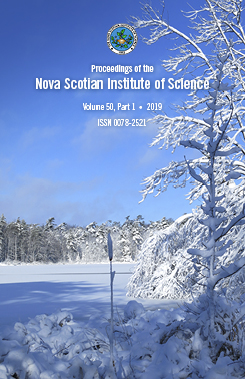Biodiversity survey method for detecting species of conservation concern in Nova Scotia protected wilderness areas and nature reserves
DOI:
https://doi.org/10.15273/pnsis.v50i1.8887Abstract
Biodiversity transect surveys have been undertaken in protected Wilderness Areas and Nature Reserves in Nova Scotia, Canada since 2002. They document plant communities as well as plant and animal species of conservation concern. The Protected Areas Branch wished to have an assessment of the value of these surveys. Fourteen years of sampling data in 80 Wilderness Areas and Nature Reserves were used to determine detectability, density and distribution of species of conservation concern. Two hundred and twenty-two occurrences of species of interest were re- corded. Nine bird species and 19 plant and lichen species were recorded 2 or more times. Densities for bird species ranged from 0.023 individuals per km of transect (± 0.012) for the Boreal Chickadee to 0.727-km (± 0.007) for the Eastern Wood Pewee. Plants densities ranged from 0.02 individuals per km (± 0.01) for the Round-Leaved Orchid to 27.1 individuals per km (± 10.4) for the Bulblet Bladder Fern. Most of the species of conservation concern were rare with 66% being found only once. The method used for the current biodiversity transect surveys appears to be adequate for the more common species of conservation concern when a single protected area is examined. However, less than half the species analyzed had a 95% confidence of being detected within the mean sample length of the transect (4.5 km). All species analyzed were within the sample length when all protected areas were combined suggesting that the present methodology is more useful as a system wide survey rather than for individual protected areas. Twenty-eight of eighty-three species of conservation concern detected during the survey occurred frequently enough for density calculations. Methods that might increase the value of the surveys include grouping species, using species richness measures, using occupancy or accepting lower confidence intervals and confidence limits.
Keywords: biodiversity survey, species of conservation concern, species at risk, protected areas


